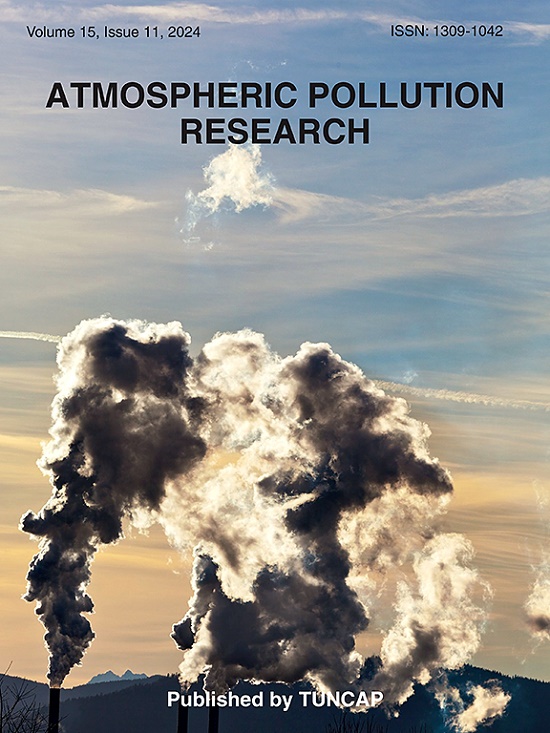塔里木盆地沙尘天气来源于2023年4月18-21日的一次沙尘事件
IF 3.5
3区 环境科学与生态学
Q2 ENVIRONMENTAL SCIENCES
引用次数: 0
摘要
沙尘天气产生的气溶胶通过改变太阳辐射而显著影响全球气候变化。以2023年4月18日至21日发生在中国塔里木盆地的一次沙尘事件为研究对象,基于混合单粒子拉格朗日综合轨迹(HYSPLIT)模型和多源卫星遥感数据,研究了沙尘的光学特征、发射、干沉降和传输路径。结果表明,沙尘天气的影响范围很广,其中以塔里木盆地影响最为严重,PM10和PM2.5颗粒浓度均超过国家标准。紫外线气溶胶指数(UVAI)的空间分布随日粉尘扩散和沉降而发生显著变化。塔里木盆地的UVAI高于其他地区。此次沙尘事件中,塔里木盆地沙尘气溶胶垂直分布广泛,最大高度达10 km以上。4月18-19日主要集中在沙尘排放,中国新疆东部和塔里木盆地中东部是主要排放区。粉尘排放区远小于干沉降区。风速是造成沙尘天气的重要因素,高风速区域与高沙尘排放区域基本一致。分析认为,此次沙尘事件是由冷空气经不同路径进入塔里木盆地造成的。不同高度的气流受地形影响,沙尘在传播过程中多次起伏。本文章由计算机程序翻译,如有差异,请以英文原文为准。
Dust weather in Tarim Basin derived from a dust event on April 18–21, 2023
Aerosols generated by dust weather significantly affect global climate change by altering solar radiation. In this study, a dust event occurred in Tarim Basin, China, from April 18–21, 2023 was selected to study the optical characteristics, emission, dry deposition, and dust transmission path based on the Hybrid Single Particle Lagrangian Integrated Trajectory (HYSPLIT) model and multi-source satellite remote sensing data. We showed that dust weather had effects over a broad region, the most serious effect was found in Tarim Basin, where the particle concentration of PM10 and PM2.5 exceeded the national standard. The spatial distribution of the ultraviolet aerosol index (UVAI) changed significantly with daily dust diffusion and deposition. The UVAI of Tarim Basin was higher than that of the other locations. During this dust event, the vertical distribution of dust aerosols in Tarim Basin was extensive and the maximum height had reached over 10 km. Dust emissions were mainly concentrated on April 18–19, and the eastern part of Xinjiang, China and the central and eastern parts of Tarim Basin were the main emission areas. The dust emission area was much smaller than the dry deposition area. Moreover, wind speed was an important factor causing dust weather, and the high wind speed areas were consistent with the high dust emission areas. Finally, we concluded that the cold air entered Tarim Basin through different paths caused this dust event. The airflows at different heights were affected by the terrain, and the dust subsided and rose several times during its transmission.
求助全文
通过发布文献求助,成功后即可免费获取论文全文。
去求助
来源期刊

Atmospheric Pollution Research
ENVIRONMENTAL SCIENCES-
CiteScore
8.30
自引率
6.70%
发文量
256
审稿时长
36 days
期刊介绍:
Atmospheric Pollution Research (APR) is an international journal designed for the publication of articles on air pollution. Papers should present novel experimental results, theory and modeling of air pollution on local, regional, or global scales. Areas covered are research on inorganic, organic, and persistent organic air pollutants, air quality monitoring, air quality management, atmospheric dispersion and transport, air-surface (soil, water, and vegetation) exchange of pollutants, dry and wet deposition, indoor air quality, exposure assessment, health effects, satellite measurements, natural emissions, atmospheric chemistry, greenhouse gases, and effects on climate change.
 求助内容:
求助内容: 应助结果提醒方式:
应助结果提醒方式:


